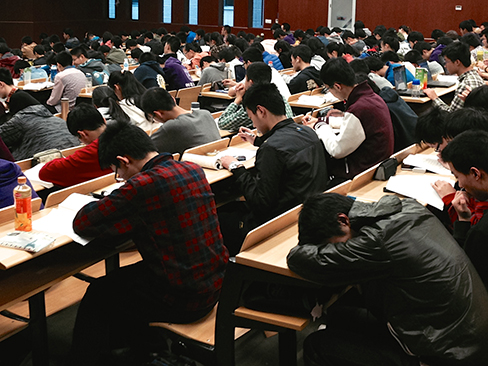| << Chapter < Page | Chapter >> Page > |

Josh is hoping to get an A in his college algebra class. He has scores of 75, 82, 95, 91, and 94 on his first five tests. Only the final exam remains, and the maximum of points that can be earned is 100. Is it possible for Josh to end the course with an A? A simple linear equation will give Josh his answer.
Many real-world applications can be modeled by linear equations. For example, a cell phone package may include a monthly service fee plus a charge per minute of talk-time; it costs a widget manufacturer a certain amount to produce x widgets per month plus monthly operating charges; a car rental company charges a daily fee plus an amount per mile driven. These are examples of applications we come across every day that are modeled by linear equations. In this section, we will set up and use linear equations to solve such problems.
To set up or model a linear equation to fit a real-world application, we must first determine the known quantities and define the unknown quantity as a variable. Then, we begin to interpret the words as mathematical expressions using mathematical symbols. Let us use the car rental example above. In this case, a known cost, such as $0.10/mi, is multiplied by an unknown quantity, the number of miles driven. Therefore, we can write This expression represents a variable cost because it changes according to the number of miles driven.
If a quantity is independent of a variable, we usually just add or subtract it, according to the problem. As these amounts do not change, we call them fixed costs. Consider a car rental agency that charges $0.10/mi plus a daily fee of $50. We can use these quantities to model an equation that can be used to find the daily car rental cost
When dealing with real-world applications, there are certain expressions that we can translate directly into math. [link] lists some common verbal expressions and their equivalent mathematical expressions.
| Verbal | Translation to Math Operations |
|---|---|
| One number exceeds another by a | |
| Twice a number | |
| One number is a more than another number | |
| One number is a less than twice another number | |
| The product of a number and a , decreased by b | |
| The quotient of a number and the number plus a is three times the number | |
| The product of three times a number and the number decreased by b is c |
Given a real-world problem, model a linear equation to fit it.
Find a linear equation to solve for the following unknown quantities: One number exceeds another number by and their sum is Find the two numbers.
Let equal the first number. Then, as the second number exceeds the first by 17, we can write the second number as The sum of the two numbers is 31. We usually interpret the word is as an equal sign.
The two numbers are and

Notification Switch
Would you like to follow the 'Algebra and trigonometry' conversation and receive update notifications?